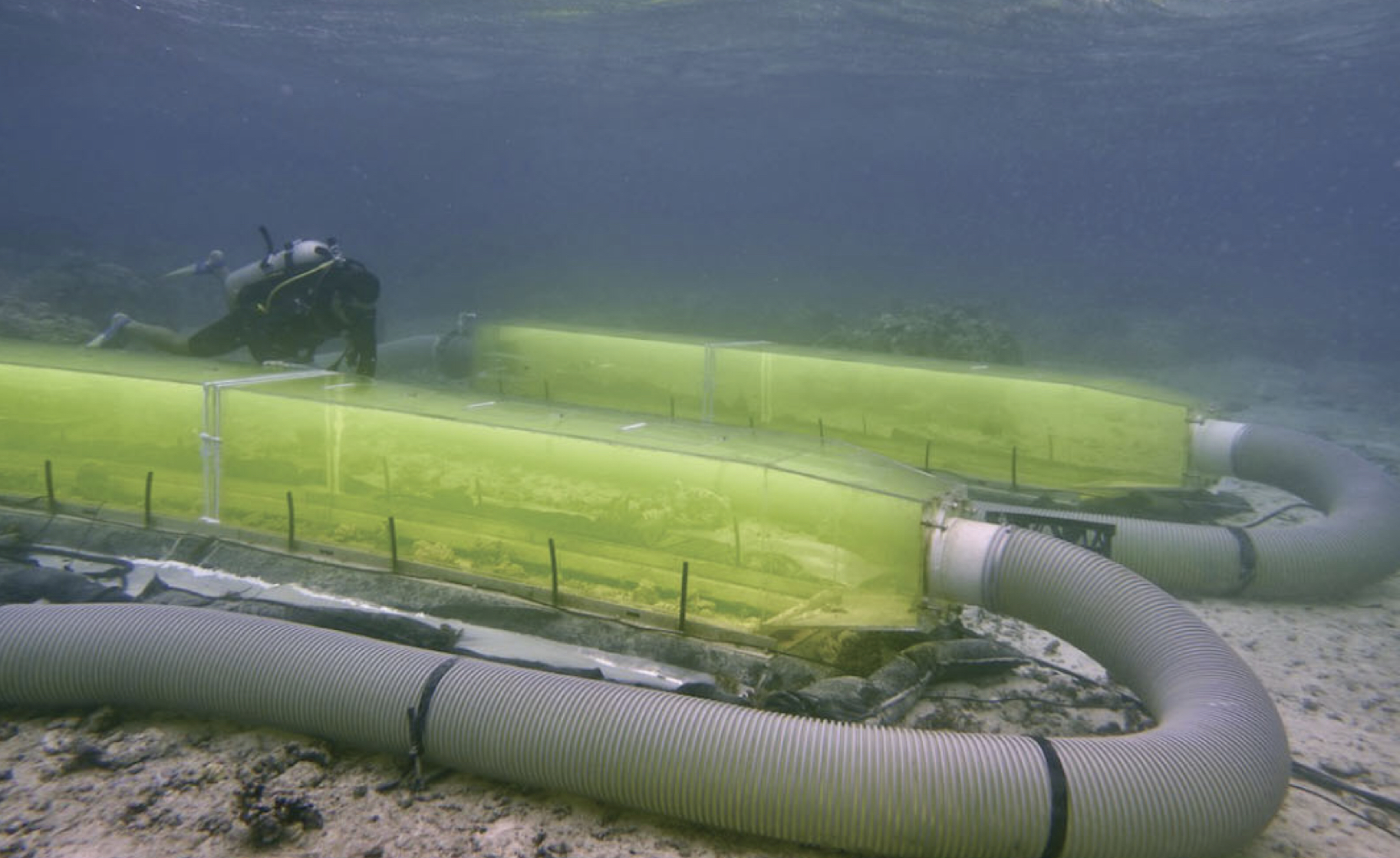Experiments that simulate conditions in the future, after years or decades of climate change, are one of the best ways to anticipate how living communities will respond to rising temperatures, higher atmospheric carbon dioxide, or acidified oceans. Manipulating these factors in otherwise natural conditions is particularly difficult in the ocean, but CSUN marine biologists have unveiled a new system to do exactly that.
The new system is described in a paper just published in the journal Limnography and Oceanography, lead-authored by MSci. alumnus Griffin Srednick. It consists of twin "flumes", five meters long and 30 centimeters wide, constructed of transparent acrylic to create a tube of controlled environment over a patch of coral reef. Each flume is built on a foundation of fiberglass rails fixed in place by steel rods, with a watertight seal provided by inflatable rubber tubing. PVC hosepipe connects the ends of each flume to create a closed loop, within which water can circulate to simulate natural flow, and to introduce changed chemistry. The whole thing is supported by a floating platform, which shelters equipment for manipulating water chemistry and temperature within the flumes, and for data recording.

The paper also presents data from a test run of the system, demonstrating that introducing extra carbon dioxide into the water within one flume consistently elevates the dissolved carbon and lowers the pH within that flume, even while both change to follow the daily cycle of respiration by the living community of the reef. The second flume serves as an experimental control, and replicates the daily respiration cycle within the range of carbon dioxide and pH from the ocean outside the apparatus. Over the test run, the community inside the flume with elevated carbon dioxide showed significantly lower assimilation of calcium into coral skeletons and reduced photosynthetic activity by the coral’s algal symbionts.
With the test run demonstrating that the system works as intended, it is ready for deployment in more complex experiments, or in other locations, potentially helping marine biologists predict the outcomes of climate change for reefs worldwide.
Top image: Twin “flumes” placed over patches of coral reef to allow manipulation of the water chemistry. The flumes have been filled with a harmless fluorescent dye to check the system’s operation. (Srednick et al. 2020, Figure 1B)

